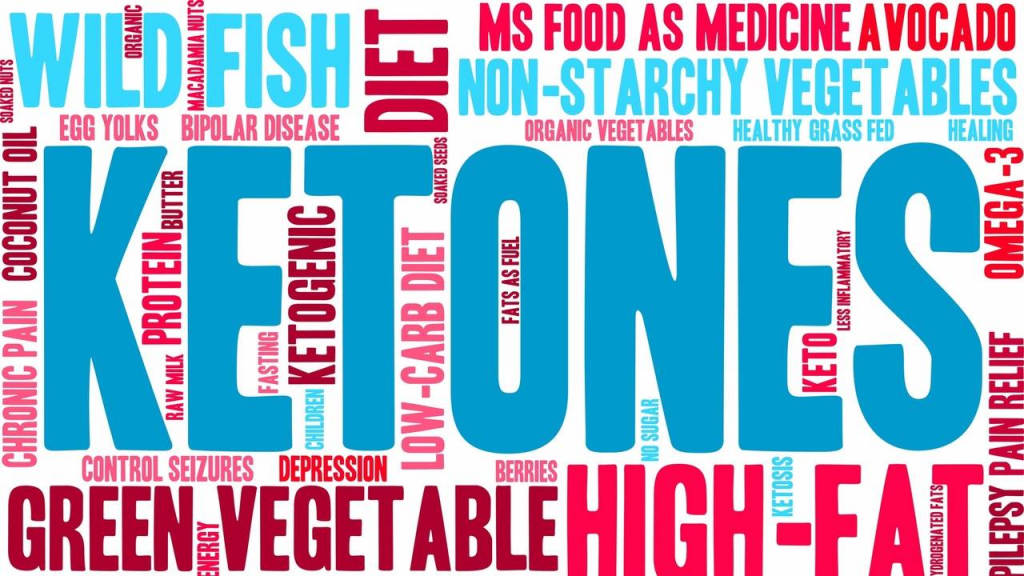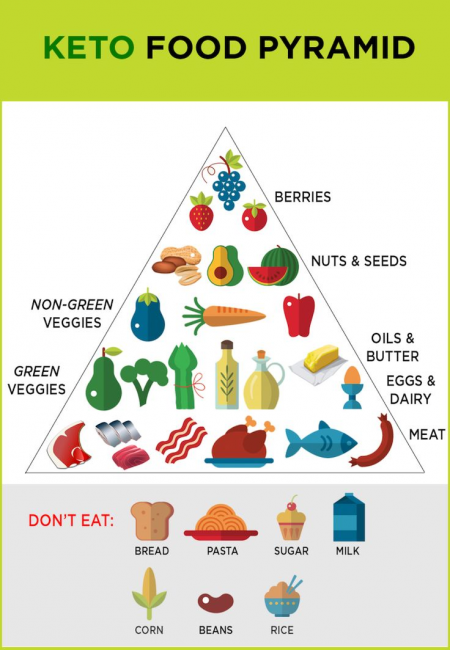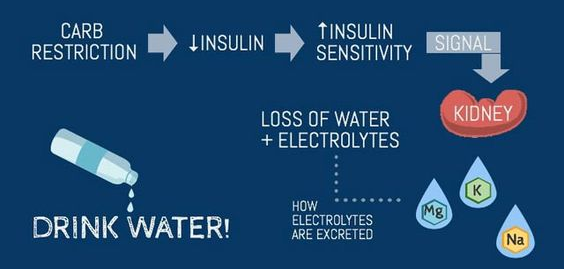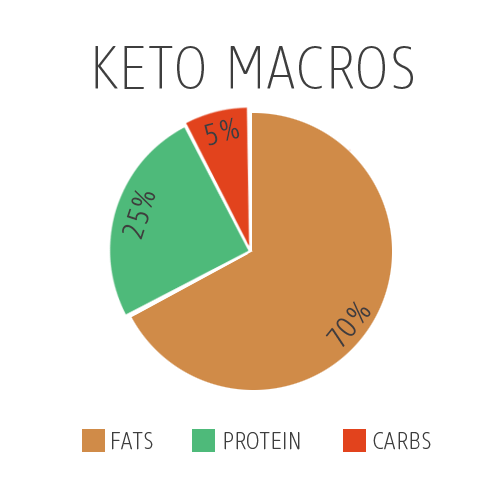
The Keto Diet by Andrew Hannegan
 Would you like to sharpen your focus at work and increase your productivity? Consider trying the KETO diet:
Would you like to sharpen your focus at work and increase your productivity? Consider trying the KETO diet:
Keto may just be another pop culture dieting buzzword to some who discount it as a viable method, but the interesting mechanics intrigued me to try it. I was surprised to find it has been used in some form or another for nearly a century, it’s early medical applications date back to the 1920s. Boasting weight loss as the primary allure, you also experience increased focus, energy, reduced appetite, clearer skin, and even lower insulin levels, managing blood glucose levels and improving cholesterol. It is both effective for short-term dieting and it’s even sustainable for long durations, benefiting both the sedentary or highly active individual. Keto has even been successful in managing, even reversing diabetes, and polycystic ovarian syndrome (PCOS), as well as epilepsy. These are some hefty claims, and keto is not without some pitfalls, so let’s discuss how it works.
 This strict, curious way of dieting consists primarily of starving the body of carbohydrates, then forcing the body to breakdown fats as the primary source of energy, called ketosis. This process happens naturally, usually when the body is completely starved of food, the liver will break down stored fat into ketones to use as an alternative to glucose as energy, most importantly for the brain, being the biggest abuser of glucose. The goal is not to starve the body of all nutrients, just carbohydrates, with intermittent fasting at times. Entering and maintaining this metabolic state can be touchy, so next we’ll cover the basic mechanics of macronutrients and achieving ketosis.
This strict, curious way of dieting consists primarily of starving the body of carbohydrates, then forcing the body to breakdown fats as the primary source of energy, called ketosis. This process happens naturally, usually when the body is completely starved of food, the liver will break down stored fat into ketones to use as an alternative to glucose as energy, most importantly for the brain, being the biggest abuser of glucose. The goal is not to starve the body of all nutrients, just carbohydrates, with intermittent fasting at times. Entering and maintaining this metabolic state can be touchy, so next we’ll cover the basic mechanics of macronutrients and achieving ketosis.
The essential macronutrients, fats, proteins, and carbohydrates, all play vital parts in everyday nutrition, and any diet will revolve around these three.
- Fats are an enemy of a bygone era where they garnered widespread disdain for their supposed direct influence of heart disease and other detriments to health. Currently, we have strayed from these old myths, realizing that fat individually is a caloric efficient ally. Fats are broken down into fatty acids, stored as triglycerides and used to create ketones, the primary source of energy in keto.
- Carbohydrates are the new-age dietary demons, saturating the Standard American Diet in an abundance of processed sugars. The problem lies in the excess carbs that are usually consumed, then stored as glycogen and fat. Carbs are not all bad, as the glucose, they are used as fuel for the body and brain, but in keto we avoid these since we want the body to utilize fats into ketones.
- Proteins are the building blocks of life. Every cell in the human body contains protein. The basic structure of protein is a chain of amino acids. In keto, protein intake is a tenuous ingredient, since about 46% is ketogenic and 54% non-ketogenic, being stored as fat and glycogen. To help balance dietary needs in keto, we’ll next outline some benchmarks.
What do you eat in a low carb diet? Similar to the popularized Atkins diet, keto uses a high fat low carb approach. You cannot eat any refined carbs, starches, and most fruits, they are processed into glucose, which spikes blood sugar levels, production of insulin, and reduces usage of fats, instead, storing fat.
- Grains – wheat, corn, rice, cereal, etc.
- Sugar – honey, agave, maple syrup, etc.
- Fruit – apples, bananas, oranges, etc.
- Tubers – potato, yams, etc.
Do Eat
- Meats – fish, beef, lamb, poultry, eggs, etc.
- Leafy Greens – spinach, kale, etc.
- Above ground vegetables – broccoli, cauliflower, etc.
- High Fat Dairy – hard cheeses, high fat cream, butter, etc.
- Nuts and seeds – macadamias, walnuts, sunflower seeds, etc.
- Avocado and berries – raspberries, blackberries, and other low glycemic impact berries
- Sweeteners – stevia, erythritol, monk fruit, and other low carb sweeteners
- Other fats – coconut oil, high-fat salad dressing, saturated fats, etc.
(www.ruled.me)
By avoiding the big offenders, staying under 20-30g of carbs a day only takes a modest effort to manage. This strict, but somewhat arbitrary number, comes from a guideline of macros for a normal day in keto, to look something like this:
Fats are the main source of energy, and 70-75% of daily calories should come from fat.
Protein should be consumed along with fats, but in a moderate amount.
Carbs should consist of less than 10% of your daily calories. When calculating these, we are actually counting net carbs, taking the total carbs minus dietary fiber and sugar alcohols.
Dietary goals can differ between individuals based on lifestyle, activity, and existing health conditions. I would recommend utilizing the many great online resources if you are seriously considering any low carb diet, and consulting with a doctor if you are diabetic or have other metabolic disorders.
Initiating a ketogenic diet is possibly the biggest obstacle. While keto is strict, adhering to the core principles will benefit most in an even short period of time, becoming easier to continue, and eventually habitual. Religiously following these steps will really help kickstart the body into ketosis.
- Restrict your carbohydrates – Most people tend to only focus only on net carbs. If you want great results, limit both. Try to stay below 20g net carbs and below 35g total carbs per day.
- Restrict your protein intake – Many people come over to keto from an Atkins diet and don’t limit their protein. Too much protein can lead to lower levels of ketosis. Ideally for weight loss, you want to eat between 0.6g and 0.8g protein per pound lean body mass.
- Stop worrying about fat – Fat is the primary source of energy on keto – so make sure you’re feeding your body enough of it. You do not lose weight on keto through starvation.
- Drink water – Try to drink a gallon of water a day. Make sure that you’re hydrating and staying consistent with the amount of water you drink. It not only helps regulate many vital bodily functions, but it also helps control hunger levels.
- Stop snacking – Weight loss tends to do better when you have fewer insulin spikes during the day. Unnecessary snacking may lead to stalls or slow in weight loss.
- Start fasting – Fasting can be a great tool to boost ketone levels consistently throughout the day. There are many different ways to go about it.
- Add in exercise – It’s a known fact that exercise is healthy. If you want to get the most out of your ketogenic diet, consider adding in 20-30 minutes of exercise a day. Even just a small walk can help regulate weight loss and blood sugar levels.
- Start supplementing – Although not usually needed, supplementing can help with a ketogenic diet.
(www.ruled.me)
 You’ll know you are entering ketosis from a few trademark signs, and sometimes a person may experience a flu-like period for a few days (more on this below). Most of the symptoms are beneficial, but initially making the transition, these are a few issues to look out for:
You’ll know you are entering ketosis from a few trademark signs, and sometimes a person may experience a flu-like period for a few days (more on this below). Most of the symptoms are beneficial, but initially making the transition, these are a few issues to look out for:
- Increased Urination – Keto is a natural diuretic, so you have to go to the bathroom more. Acetoacetate, a ketone body, is also excreted in urination and can lead to increased bathroom visits for beginners.
- Dry Mouth – The increased urination leads to dry mouth and increased thirst. Make sure that you’re drinking plenty of water and replenishing your electrolytes (salt, potassium, magnesium).
- Bad Breath – Acetone is a ketone body that partially excretes in our breath. It can smell sharp like overripe fruit, similar to nail polish remover. It’s usually temporary and goes away long term.
- Reduced Hunger & Increased Energy – Usually, after you get past the “keto flu,” you’ll experience a much lower hunger level and a “clear” or energized mental state.
(www.ruled.me)
The aforementioned Keto Flu is not an actual sickness, but the symptoms are very similar to the flu, minus the fever, and usually much milder than the crippling comparison. I went through it, acknowledging a tangible transformation. These ailments are almost entirely caused by lack of electrolytes, dehydration, and from urinating much more frequently, lasting only a few days or less. The fix is simple, adding more electrolytes, or salt, to your diet, and not starving yourself. The main nutrients lost when frequently urinating are magnesium, potassium, and sodium, which can be replenished by salting foods, a cup of chicken broth or bullion, and lots of fluids.
Once over the hump, the benefits begin to trickle in, even within the first week. My one month of dedicated keto was far from flawless, but was rewarded with weight loss, increased sustained energy, better sleep, better eating habits, and my skin even cleared up. If you consider trying a keto diet, or even a modified low carb diet, research online some recipes and other specific information. There are many great resources regardless of if keto is your goal. I encourage you to take a chance and try it out!
Resources:
https://www.dietdoctor.com/low-carb/keto
https://www.ruled.me/guide-keto-diet/
https://www.Msfoodasmedicine.com
The information provided is for general interest only and should not be misconstrued as a diagnosis, prognosis or treatment recommendation. This information does not in any way constitute the practice of medicine, or any other health care profession. Readers are directed to consult their health care provider regarding their specific health situation. Marque Medical is not liable for any action taken by a reader based upon this information.

